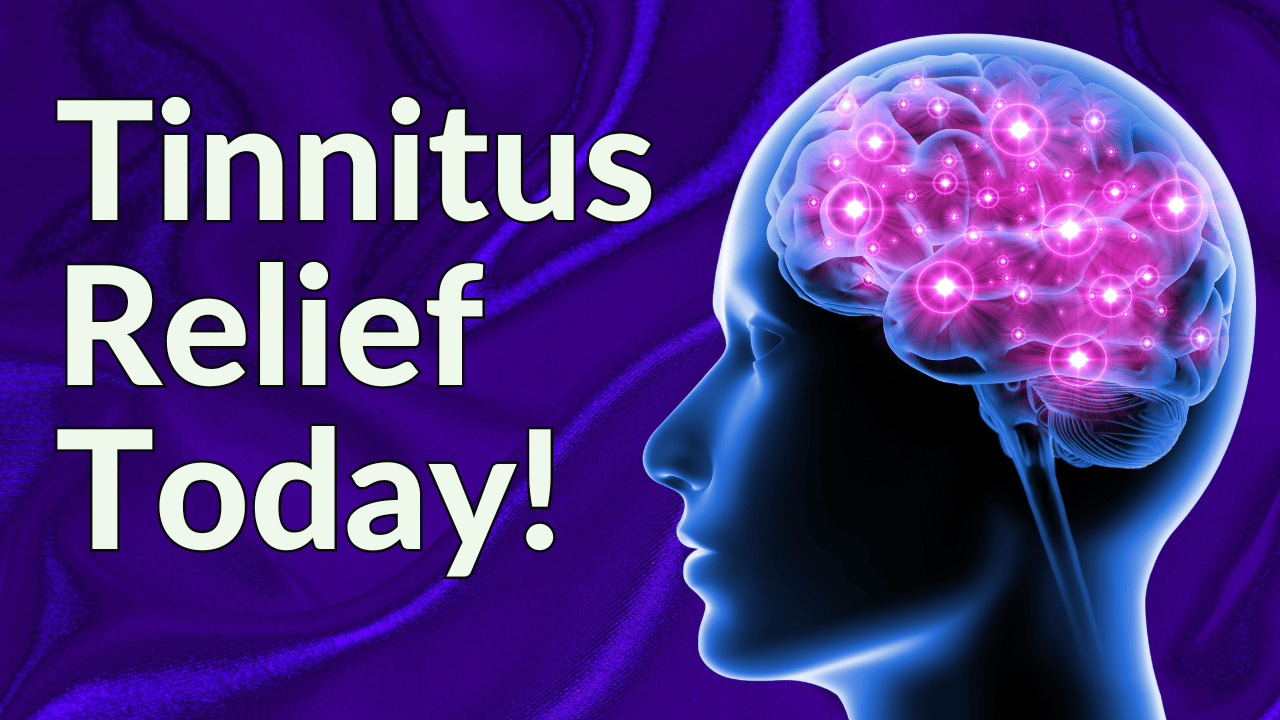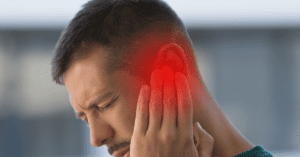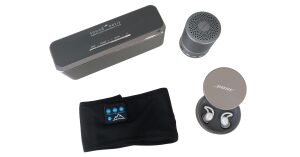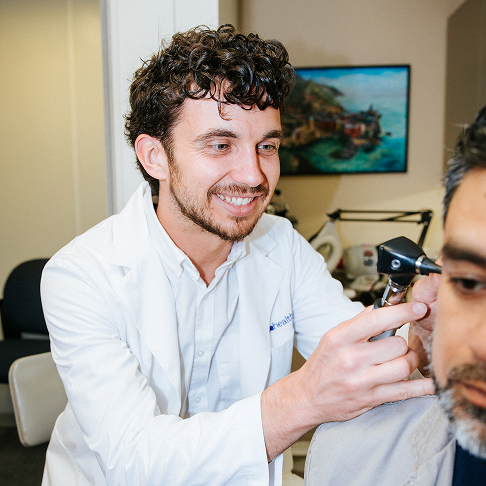Tinnitus: An Overview
Chronic conditions like cancer, heart disease, and diabetes significantly impact life quality, hindering work, daily tasks, and overall fulfillment. Tinnitus, a condition experienced by 15% to 20% of people, involves hearing phantom noises such as ringing, buzzing, or hissing, often due to underlying issues like circulatory disorders or age-related hearing loss. Unlike mental health conditions that produce auditory hallucinations, tinnitus is characterized by these persistent, non-external sounds.
Referred to as ‘chronic tinnitus’ when lasting over six months, it has no cure, but treatments focus on managing the underlying cause or using devices like hearing aids to alleviate symptoms. Tinnitus arises from damage to the auditory system, particularly the inner ear or auditory cortex. Normally, sound waves travel to the cochlea, converting to electrical signals for the brain. Damage disrupts this process, leading to the brain interpreting nonexistent sounds.
Often, damage occurs in the cochlea’s hair cells. The brain, accustomed to receiving signals from these cells, may react by amplifying the perceived sound, akin to raising the TV volume. This phenomenon is similar to the experience of a phantom limb after amputation.
"Treble Health is a beacon of hope - they helped me to significantly reduce my tinnitus volume and awareness within just a few short months."

"Treble Health is a beacon of hope - they helped me to significantly reduce my tinnitus volume and awareness within just a few short months."
– Melinda
Schedule a free consultation to learn which Treble Health solution is right for you. Join Melinda and thousands more who have found lasting tinnitus relief.
Book a free consultation to learn which Treble Health solution is right for you. Join Melinda and thousands more who have found lasting tinnitus relief.
Risk Factors And Symptoms Of Tinnitus
Tinnitus often follows exposure to loud noises, like a concert, but typically this is temporary. Earwax blockage removal can also significantly relieve symptoms. Various medications also have the potential to trigger or exacerbate tinnitus, including nonsteroidal anti-inflammatory drugs (NSAIDs) like aspirin and ibuprofen, antimalarial drugs such as chloroquine, tricyclic antidepressants like imipramine, benzodiazepines including diazepam, anticonvulsants, certain antibiotics, cancer treatments, loop diuretics, isotretinoin, and some beta-blockers.
Age-related hearing loss is another common cause of tinnitus, especially in those over 55, but it can also affect younger individuals due to hearing loss, head or neck injuries, jaw or dental problems, circulatory or inner ear disorders, tumors, eustachian tube issues, and chronic conditions like diabetes and autoimmune disorders.
Tinnitus is often accompanied by memory issues, sleep disturbances, depression, anxiety, concentration difficulties, hearing disruption, ear pain, ear fullness, facial twitching, numbness, cramping on the affected side, and stiff neck.
Repetitive Transcranial Magnetic Stimulation
Repetitive Transcranial Magnetic Stimulation (rTMS) is a non-surgical brain stimulation method used to treat various mental and neurological conditions. Introduced in 1985, it gained FDA approval in 2008 for treating severe depression. rTMS uses electromagnetic pulses to activate brain nerve cells, and is often paired with cognitive behavioral therapy (CBT). It’s helpful for conditions like bipolar disorder, depression, OCD, epilepsy, migraines, and nicotine addiction, and is now being explored for tinnitus treatment. Conducted in a clinic, it’s a convenient option for patients.
Magnets are crucial in rTMS, similar to their use in MRI machines for detecting cancer and injuries. These strong magnets in rTMS influence brain activity, showing promise in treating various conditions, including tinnitus.
What To Expect During TMS
Before TMS Treatment
TMS isn’t considered a first line of defense against conditions such as depression, but many patients turn to it when traditional treatment methods have failed. When TMS treatment is being discusses as an option, healthcare professionals perform a series of physical and psychiatric tests to ensure it’s necessary. They also do this to ensure there aren’t any underlying medical conditions causing the patient’s symptoms.
During TMS Treatment
During TMS, patients sit comfortably as an electromagnetic coil is placed on their head, targeting specific brain areas. Jewelry and other metallic items must be removed to avoid interference. The process, known as rTMS, is non-invasive and doesn’t require anesthesia, often completed within 20 to 30 minutes. Patients may feel a tapping sensation and hear clicking noises, similar to an MRI machine, and are provided earplugs for comfort and hearing protection – it is important to note that failure to protect the ears during TMS can affect normal hearing and result in permanent hearing loss. To make the experience as easy as possible, the treatment intensity is adjusted based on the patient’s response.
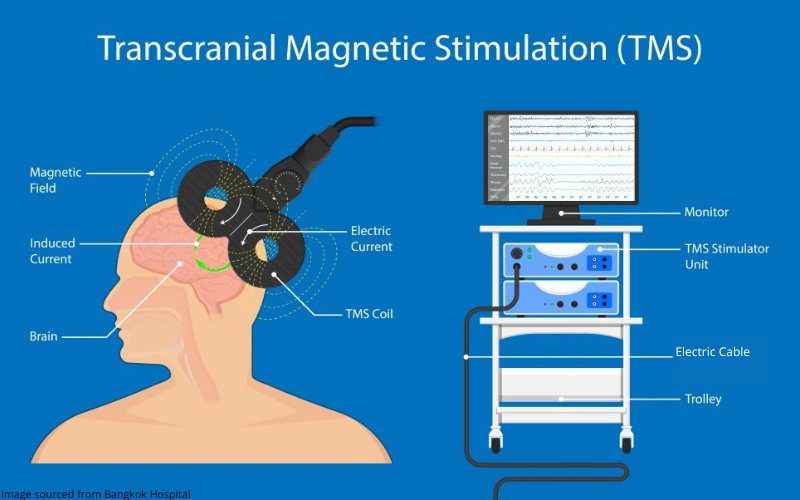
After TMS Treatment
Post-TMS, patients can immediately resume normal activities and drive themselves home. However, some patients may experience temporary discomfort at the treatment site, headaches, lightheadedness, tingling, or facial muscle spasms. Following initial sessions, subsequent treatments are typically shorter, with the entire process spanning 6 weeks of daily stimulation. Maintenance treatments may be necessary after symptom recovery.
Who Can Benefit From TMS?
Transcranial Magnetic Stimulation (TMS) therapy is primarily for adults (18 and older) with mental health conditions like depression and OCD, especially those resistant to medications and other treatments. However, it’s not suitable for everyone. Patients with metal implants, such as bullet fragments in the head, or those with a history of seizures are typically ineligible.
Cost is also a consideration, as TMS therapy can be expensive and insurance coverage is not guaranteed. Most insurance companies only cover TMS for Major Depressive Disorder, often after other treatments have been tried. The financial aspect can be a barrier for uninsured patients, limiting their access to this therapy. Despite these limitations, there are more affordable and effective alternatives available for treating these conditions.
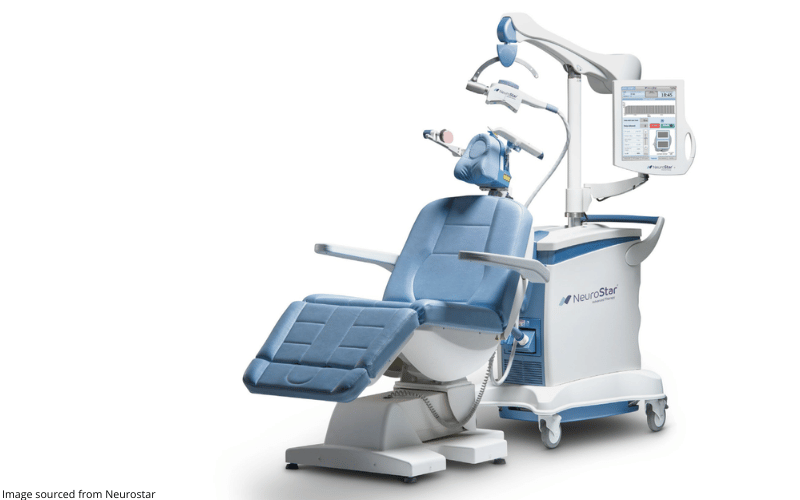
Safety Features For TMS Treatment
One of the most important safety considerations for rTMS devices is how well they’re able to consistently deliver the pulses. The output should be consistent throughout treatment, and it’s very possible for component failure or drift to affect efficacy. Every TMS device must demonstrate its ability to indicate it’s functioning optimally.
Since the same therapy is provided at every session, the device must be able to recreate the same conditions throughout the treatment process. The initial rTMS session is the longest, and patients aren’t expected to go through finding their motor threshold and coil placement every single session. The FDA deems recalling these presets an important safety feature for rTMS devices.
rTMS devices should also have some type of features or components to prevent overheating. The risk of burns, though rare, is still a real possibility and should be disclosed to patients receiving TMS. Alarms should also be present to alert the treatment administrator of any problems with the device.
Types Of TMS
Before we explore how TMS can help with the treatment of tinnitus, we have to understand what the treatment entails. This will make connecting those complicated dots easier.
TMS treatments can take different approaches to treat specific conditions. This can involve using a different pulse pattern, or magnetic coils. rTMS is TMS that involves using repetitive pulses during treatment at low-frequency 1Hz (1 pulse/second) or high-frequency 5-10Hz (5-10 pulses/second).
Theta-burst stimulation or TBS is an accelerated form of TMS. TBS uses triple bursts, emitting 15 pulses in a single second, with sessions lasting as little as 1 to 3 minutes. dTMS or Deep TMS uses H-shaped helmed coils to penetrate deeper into the brain. This makes it more effective at treating OCD and other conditions such as autism and PTSD.
rTMS Treatment For Tinnitus
For chronic tinnitus, patients often explore various treatments before finding relief. Repetitive Transcranial Magnetic Stimulation (rTMS) has emerged as a potential therapy, with its effectiveness still under study. This non-invasive method is being researched for its ability to reduce tinnitus severity.
Patients considering rTMS can expect a thorough medical review, including lifestyle, family history, and any conditions like high blood pressure or mental illness that might relate to tinnitus. A physical exam focuses on identifying any external causes of tinnitus, examining the inner ear, head, and neck.
The American Tinnitus Association recognizes rTMS as a promising treatment. It’s thought to work similarly to how it helps in depression, targeting brain areas linked to tinnitus perception like the primary auditory cortex, dorsomedial prefrontal cortex, and anterior cingulate cortex. These brain regions, along with the amygdala, anterior insula, and hippocampus, are associated with tinnitus-related symptoms like stress and sleep disturbances.
Studies show mixed results, but some indicate that rTMS can decrease tinnitus severity. A significant aspect is the oscillatory activity in the auditory cortex and other brain regions. Increases in alpha power in the auditory cortex have been linked to reduced tinnitus severity, while decreases can intensify it. Research suggests that a series of 10 rTMS sessions might aid tinnitus management for up to four years. However, the effectiveness depends on the correct stimulation protocol, as incorrect application could worsen symptoms.
So Far, The Science Says:
Transcranial magnetic stimulation, or TMS can be used to treat many conditions. High-frequency rTMS targeting the left dorsolateral prefrontal cortex is the acceptable TMS treatment for depression. However, the TMS settings and protocols differ when dealing with chronic tinnitus. Administrators of repetitive transcranial magnetic stimulation must understand the importance of making the necessary adjustments on a case-by-case basis.
Studies on rTMS treatment for tinnitus that show promise have some similarities, but there is a glaring difference in protocol parameters. This is what we know so far from the information collected from several randomized controlled studies:
- Frequency
- Low frequency rTMS can reduce activity in the auditory cortex and other non-auditory areas related to tinnitus perception.
- Pulse rate
- Overstimulating the auditory cortex during TMS therapy can have the opposite effect, increasing tinnitus loudness or intensity
- Treatment location
- Most of these studies involve single-site therapy at the auditory cortex, however, two randomized controlled studies have investigated triple-site therapy. The studies that treated the temporoparietal junction (TPJ) showed no clinical efficacy. Single-site therapy that targeted the auditory cortex (AC) and posterior superior temporal gyrus (STG) shows potential in reducing tinnitus loudness.
- There is no significant difference when triple-site therapy is used. Dual-site therapy of the left dorsolateral prefrontal cortex (DLPFC) and left temporal cortex (TC) is more effective than single-site DLPFC therapy. In one placebo controlled study, bilateral DMPFC stimulation had made a significant difference in the lives of patients with chronic tinnitus.
- Baseline and outcome measures
- Tinnitus questionnaires are useful tools for establishing clinical efficacy, as they’re used to measure tinnitus perception, severity, impact, and its characteristics. Two of the most commonly used questionnaires are the Tinnitus Functional Index (TFI) and the Tinnitus Handicap Inventory (THI).
- PET and MRI imagining are useful tools for highlighting the metabolic and functional changes of repetitive transcranial magnetic stimulation treatment. Electroencephalography (EEG) is useful for observing differences in VAS scores and brain wave frequencies.
The majority of clinical trials we’ve studied say repetitive transcranial magnetic stimulation rTMS has the potential to be worthwhile for the treatment of tinnitus. Stimulating the auditory cortex and other non-auditory parts of the brain may be just the thing. The current obstacle is the standardization of rTMS treatment for tinnitus. Further clinical trials should establish protocol for chronic tinnitus treatment and open the doors for futuristic treatments.
Is TMS For Tinnitus Safe?
The safety and efficacy of Transcranial Magnetic Stimulation (TMS) for tinnitus are still under FDA review, with over two decades of studies and clinical trials. Despite its potential, there are unresolved issues and concerns regarding the treatment’s application.
One major factor is the type or brand of the TMS system. Effective treatment relies on specific characteristics of the magnetic fields, including size, penetration, and shape. Accurate coil placement, current direction, and coil type are crucial for successful treatment outcomes.
Another area of debate is the stimulation parameters. While the standard frequency for rTMS is 1Hz, higher frequencies may be more effective for tinnitus. Continuous theta burst stimulation (cTBS) is being explored, but its efficacy remains uncertain.
Determining the correct stimulation intensity is critical. This involves establishing the patient’s resting motor threshold (rMT), a process not uniformly addressed in existing studies, leading to uncertainty in treatment protocols.
Large-scale, multi-site studies are needed to fully understand rTMS’s safety and effectiveness in treating tinnitus. These studies would help answer important questions about how factors like tinnitus duration, cause, patient age, and age-related hearing loss impact treatment outcomes, as well as determining the best measures for evaluating treatment success.
rTMS For Tinnitus Success
Tinnitus isn’t the same for every patient, which is part of the reason some treatments work for some patients and not for others. Factors such as tinnitus duration, cause, intensity, and hearing loss play a role in how well certain treatments work.
With the risks and limitations of rTMS for chronic tinnitus in mind, let’s explore some success stories:
Case Study One: Elderly Patient With Chronic Tinnitus And Depression
In one study, a 62 year old patient had been suffering from tinnitus for seven years. All tests (brain imaging, electroencephalogram, and audiogram) came back normal, however, it was evident that the tinnitus was causing severe depression and anxiety.
His tinnitus developed during a period of work-related stress and led to psychomotor retardation and suicidal ideation. Having refused traditional antidepressants and psychotherapy, the patient opted for rTMS. Here, the right-side dorsolateral prefrontal cortex and left auditory cortex were the treatment areas.
The patient experienced a significant reduction in the severity of tinnitus, anxiety, and depression after 20 rTMS sessions. However, this was not a placebo controlled study, and the small sample size serves another limitation.
Case Study Two: Middle-Aged Patient With Chronic Bilateral Tinnitus
In another study, positron emission tomography and computed tomography imaging (PET-CT) was used to guide rTMS in a 43-year-old patient. This patient had suffered from bilateral tinnitus for over 30 years, and rTMS was administered to the area of increased cortical activation shown on the PET-CT. It resulted in a decrease in chronic tinnitus symptoms over the next four weeks. This supports the theory that targeting the primary auditory cortex can reduce tinnitus severity.
Case Study Three: Deaf Tinnitus Patient
In a randomized clinical trial, rTMS therapy was received over the course of ten days. A 28-year-old patient whose deafness was linked to scarlet fever at age four described her tinnitus as just as bothersome as her hearing loss.
Though her Beck Depression Inventory (BDI), TFI, and SAI scores increased, the patient did indicate a reduction in tinnitus loudness in her VNS test. Note that half the patients in the study experienced a significant decline in their TFI scores. More testing is needed to determine the efficacy of rTMS for deaf tinnitus patients with hearing loss, but scientists cite potential.
Case Study Four: Dentist With Occupational Noise Exposure-Induced Tinnitus
A 75-year-old patient with chronic tinnitus caused by occupational noise exposure received weekly rTMS over the course of five weeks, then monthly rTMS over the course of six months. The patient had no apparent damage to the auditory canals or brain.
Improvement of symptoms was highlighted in his symptom diary, along with the tinnitus handicap inventory, and a mini-tinnitus questionnaire. Short-term side effects included headaches during stimulation and dizziness after treatment.
Case Study Five: Severe Tinnitus Caused By Brain Injury, Alcoholism, Or Depression
rTMS treatment is sometimes avoided in the event of brain injury due to the increased risk of seizures. However, this case features a 53-year-old man with chronic tinnitus brought on by brain injury and compounded by alcohol abuse and depression. Five treatments targeted at the left auditory cortex resulted in no side effects and tinnitus complaints.
Closing Thoughts
In conclusion, the journey through the complexities and potential benefits of TMS for treating tinnitus offers both hope and a call for ongoing research. While TMS has shown promise in managing symptoms of this challenging condition, it’s important to recognize that tinnitus is a multifaceted disorder, with each case presenting unique challenges. Therefore, TMS could be a significant addition to the array of treatments available, especially for those who have found little relief in traditional methods.
However, it’s crucial to approach TMS with a balanced perspective. The current state of research, while encouraging, still requires a significant amount of further exploration to standardize protocols and ensure the safety and effectiveness of this treatment for diverse tinnitus cases. As we move forward, it’s essential for patients and healthcare providers to remain informed and acknowledge the need for continued research and individualized care strategies. In doing so, we can better navigate the complexities of tinnitus treatment and offer effective, tailored solutions to those affected by this condition.
Treating Tinnitus With Treble Health
At Treble Health, we understand the unique challenges presented by tinnitus. Our team of audiologists is here to help, offering expert guidance and support tailored to your specific condition. If you are struggling to manage bothersome tinnitus, we encourage you to schedule a complimentary telehealth consultation with a tinnitus specialist on our team.
By scheduling a complimentary telehealth consultation, you are taking a vital step towards understanding and managing your tinnitus. In this 20-minute Zoom session, our team will provide personalized recommendations, answer your questions, and help you navigate the complexities surrounding your specific situation. We are committed to helping you find relief and improve your quality of life. Click here to book your free consultation and start your journey to a quieter, more comfortable life.
Next Step: Book Free Consultation
- 75% of patients reduced their tinnitus within three months after following our recommendations.
- "I feel like Treble Health literally gave me my life back." - Randy S. (verified customer)
- Join thousands of people who have reduced their tinnitus after scheduling a free consultation.






